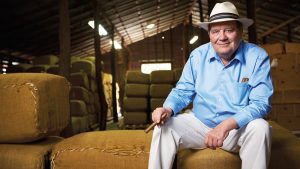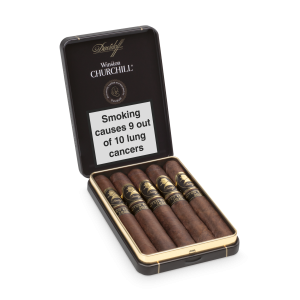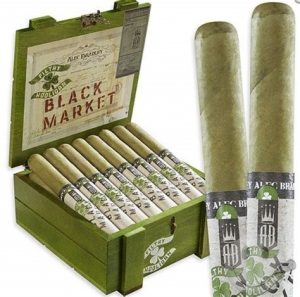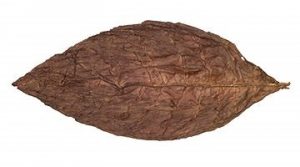Davidoff always has been synonymous of quality and luxury. Their cigar blends and lines have been changing during the years and now days the brand offer a lot more variety than ever. Davidoff cigars in the past were more popular to new smokers and their lines were mostly mild.Today Davidoff offers blends with tobaccos from many different country and different types ranges and strength.
In my humble opinion I sometimes considered Davidoff cigars a bit overpriced in comparison with other premium brands but we also need to think in all the people involved in every single Davidoff cigar from the field to your palate. Also is very rare and almost impossible to find a Davidoff cigar with construction issues. And for some unique blends they make is worth it to pay the price. In the past I have been a big fan of the Davidoff Puro D Oro line blended with 100% Dominican tobacco as the dream of Davidoff Master Blender Henke Kelner was to create the perfect Dominican puro. Sadly, Davidoff discontinued this unique blend…

In 2017 Davidoff impressed me once again with a totally unique blend. Davidoff Winston Churchill Late Hour.
Why unique? Not just because they used tobaccos from 4 different countries… Yes, you read right…
4 different countries!! Also, for a secret in the filler….
WRAPPER:
Ecuadorian Habano seed Marron Oscuro wrapper. Dark and rich in flavour.
BINDER:
Mexican Negro San Andres binder: Mexican tobacco is very hard to cultivate, age and ferment as a little mistake can ruin the entire process but if everything goes well you have one of the richest, sweet and intense cocoa flavour tobacco like the one used in this binder.
FILLER:
3 different Dominican tobaccos are used in this filler: San Vicente mejorado Viso, Piloto Seco, and Olor Viso. Nicaraguan Esteli Viso and the pearl and what makes different this cigar… A Nicaraguan Condega Viso aged for 6 extra months in the finest Scotch Cask barrels. The leaves are firmly pressed inside the casks. As the temperature in the closed casks rises, the tobacco enters a fermentation process. The rise in temperature is checked regularly to prevent the tobacco from overheating. After three months the tobacco is turned to the other side to age an additional three months for a total of six months. During this period the tobacco absorbs the aromas of the cask and whisky. The cask ageing leads to more oak sweetness and deeper flavours.

Since this line came into the market is won so many awards and received lots of positive comments and reviews from our customers.



Davidoff Winston Churchill Late hour is available in 3 sizes in the UK
And the new Limited Edition 2020 Petit Panatela 4” x 38. These cigars comes in a nice Tin of 5’ which make it perfect to enjoy this unique blend during your trips or a short 20 min coffee break

All sizes available here.
Enjoy!
David
Cigar Ambassador








 conditions, garnering it the nickname “Connecticut Shade” because it is mostly grown under some form of protection – like giant sheets of cheesecloth. This keeps its colour light and the unpredictable weather, such as excessive sun radiation, from beating up the plant. The lack of sunlight also contributes to the leaf’s mild flavour and low nicotine content, but it usually has a woody, mellow, and dry nuts taste. Suggested examples include Mitchellero, Joya Classico, Davidoff signature etc
conditions, garnering it the nickname “Connecticut Shade” because it is mostly grown under some form of protection – like giant sheets of cheesecloth. This keeps its colour light and the unpredictable weather, such as excessive sun radiation, from beating up the plant. The lack of sunlight also contributes to the leaf’s mild flavour and low nicotine content, but it usually has a woody, mellow, and dry nuts taste. Suggested examples include Mitchellero, Joya Classico, Davidoff signature etc Corojo. A little darker in colour than the Connecticut wrapper, the Corojo was originally grown in Cuba but, because of the embargo, it is now mostly grown in Honduras and Nicaragua. Due to the new location, the seed needed to be genetically modified in order to survive in its new environment. This wrapper tends to have a very spicy, peppery, robust flavour, favoured by many cigar smokers; however, one drawback to the wrapper is its toughness. It sometimes doesn’t smoke easily. Some examples are Camacho corojo, Rosalones classic, La Aurora ADN etc
Corojo. A little darker in colour than the Connecticut wrapper, the Corojo was originally grown in Cuba but, because of the embargo, it is now mostly grown in Honduras and Nicaragua. Due to the new location, the seed needed to be genetically modified in order to survive in its new environment. This wrapper tends to have a very spicy, peppery, robust flavour, favoured by many cigar smokers; however, one drawback to the wrapper is its toughness. It sometimes doesn’t smoke easily. Some examples are Camacho corojo, Rosalones classic, La Aurora ADN etc


 dark brown; however, one may find an occasional offbeat green wrapper. All leaves are originally green, but the aging process is what brings the exterior its chocolate hue.
dark brown; however, one may find an occasional offbeat green wrapper. All leaves are originally green, but the aging process is what brings the exterior its chocolate hue.